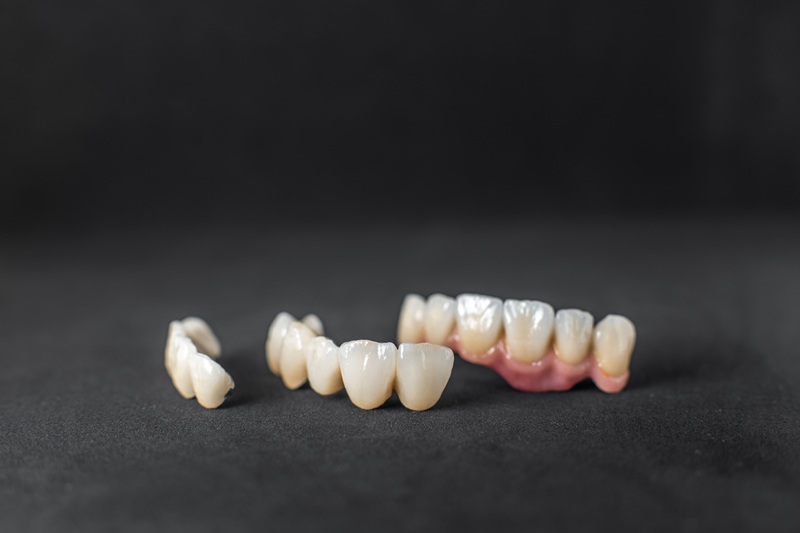Why a Dental Crown is Often the Best Option for a Heavily Filled Tooth

When a tooth has been filled many times or has a very large filling, it will not be too long before something breaks. While a dental filling works well for small to medium cavities, it is not always enough to protect a tooth that has already lost a large portion of its structure.
So, what can you or your dentist do to make sure your tooth is still protected?
One common option is the dental crown. A crown acts like a protective cover or helmet that restores the tooth’s strength, helping it function properly again. In this post, let’s explore why heavily filled teeth often need crowns, how the dental crown procedure works, and what types of crowns are available.
When a Filling Is Not Enough Anymore
A filling is designed to “fill in” a hole in your tooth caused by decay or damage. When that hole is small to medium, say, less than half of the tooth’s structure, the filling can work very well and last for many years.
However, when more than 50% of the tooth is already missing or drilled down because of the cavity, the remaining natural structure becomes thin and fragile, similar to an eggshell. While the filling itself may stay intact, the weak tooth around it can start to crack or chip over time.
Teeth that have been filled several times over the years also become weaker and more brittle. Every time the filling is replaced, more tooth material is removed, leaving less structure to hold everything together. Eventually, the tooth can reach a point where it can no longer support another filling and risks breaking entirely.
That’s why dentists often recommend a dental crown treatment before the tooth reaches that stage.
How Does a Dental Crown Work?
A dental crown is like a helmet for your tooth. It fits over the remaining tooth structure, holding everything together and protecting it from further damage.
Unlike a filling, which only covers a small section of the tooth, a crown covers the entire visible surface, helping restore both strength and shape. This “full coverage” approach makes the tooth much more resistant to the pressure and forces of chewing.
Crowns are particularly beneficial for:
- Teeth with large or multiple fillings
- Teeth that have been root canal treated (as they’re more brittle)
- Cracked or fractured teeth
- Worn-down teeth from grinding or clenching
The essence of covering and reinforcing the remaining structure with a crown prevents further cracking, breaking, or decay under the old filling.
Why Crowns Last Longer Than Large Fillings
While a large filling can temporarily repair a damaged tooth, it does not strengthen it. A crown, on the other hand, provides more coverage to protect the entire biting surface.
Here’s why this matters:
- Prevents cracks: The crown redistributes biting pressure evenly across the tooth, reducing the chance of fractures.
- Protects against future decay: It seals the tooth completely, stopping bacteria from sneaking under old fillings.
- Restores normal function: With a crown, you can chew comfortably again without worrying about your tooth breaking.
In short, a crown vs a large filling is not just about the appearance it provides for the tooth. It’s about long-term protection and durability.
The Dental Crown Procedure
Getting a crown usually takes two appointments. Here’s what to expect when you get a dental crown procedure:
1. Preparing the Tooth
The dentist first removes any weak or decayed areas and shapes the tooth so the crown can fit properly. If the tooth is very broken down, a core build-up or post may be placed to give the crown something solid to hold onto.
2. Taking Impressions
Next, an impression or digital scan of your tooth is made. This is sent to a dental lab, where your custom crown will be crafted to match the shape and colour of your surrounding teeth.
3. Placing a Temporary Crown
While waiting for the final crown, a temporary one is fitted to protect your damaged tooth.
4. Fitting the Permanent Crown
Once the custom crown is ready, your dentist will check its fit, comfort, and colour with your natural teeth. If everything looks and feels right, it’s permanently cemented into place.
After your dental crown procedure, your restored tooth should look and function just like a natural one.
Types of Dental Crowns Available
Dental crowns can be made from different materials, each offering varying levels of strength, appearance, and longevity. Here are the most common options:
- Porcelain-Fused-to-Metal (PFM): Combines a strong metal base with a natural-looking porcelain layer. Durable (15+ years), but the metal may show near the gum line over time.
- All-Ceramic (Porcelain): Blends well with natural teeth, which is ideal for front teeth. Slightly less durable than PFM and may chip under heavy bite pressure.
- Gold Alloy: Extremely durable and long-lasting (20+ years). Best for back teeth where strength is key, though the gold colour is visible.
- Cast Metal: Strong and cost-effective, suitable for molars. Less aesthetic due to metallic colour.
- Zirconia: Very strong and biocompatible with good aesthetics. May appear less translucent than pure porcelain.
Protecting a Heavily Filled Tooth for the Long Term
When a tooth has been filled multiple times or has lost more than half of its structure, it’s no longer strong enough to rely on a filling alone. A dental crown offers the best long-term protection, acting like a custom-fitted helmet that holds the tooth together.
If you have a heavily filled tooth or one that has started to chip around an old filling, you may need to ask your dentist whether a crown could help save it before more serious damage occurs.
At Whitehorse Dental, our friendly and helpful team can help and guide you on whether you can benefit from a dental crown treatment.
Book a consultation today to learn more about dental crowns.
Frequently Asked Questions
1. When does a tooth need a crown instead of a filling?
If more than half of the tooth structure has been lost or it has been filled many times, a crown is usually recommended. Crowns protect fragile teeth from cracking or breaking.
2. Why can’t a large filling protect my tooth long term?
Large fillings don’t strengthen teeth, because they simply fill the space. When a tooth is thin or weak, biting forces can cause it to chip or fracture around the filling. A crown covers and reinforces the entire tooth.
3. How does a dental crown work?
A crown fits over the remaining tooth like a protective cap, holding it together and restoring strength and function. It helps prevent further damage while improving the tooth’s shape and stability.
4. What happens during the dental crown procedure?
Your dentist reshapes the tooth, takes a digital scan or impression, and places a temporary crown. Once your custom crown is made, it’s fitted, adjusted for comfort, and permanently bonded.
5. How long do dental crowns last?
With good care and regular dental visits, crowns can last 10–20 years or longer, depending on the material used and your oral hygiene habits.
6. What materials are dental crowns made from?
Common options include porcelain, zirconia, gold, and porcelain-fused-to-metal. Each material differs in appearance and strength, and your dentist will recommend the best one for your needs.
7. Do crowns look natural?
Yes. Modern porcelain and zirconia crowns are designed to match your natural teeth in colour and shape, creating a seamless, lifelike result.
8. Is getting a crown painful?
No. The procedure is done under local anaesthetic to ensure you’re comfortable. You might feel mild pressure, but not pain. If you do, make sure to let your dentist know right away.
9. How do I care for a tooth with a crown?
Brush twice daily, floss around the crown, and attend regular dental check-ups. Avoid biting hard objects like ice or opening packaging with your teeth.
10. What if my old filling keeps breaking?
That’s often a sign the tooth is too weak for another filling. Speak with your dentist about a dental crown treatment to protect it before more serious damage occurs.

